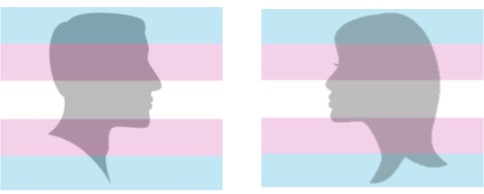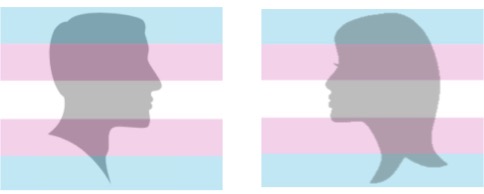You’ve finally gotten your 2nd, 3rd, maybe even 4th generation family tree completed, because everyone is currently living or you’ve been there for someone’s death, and ordered that massive canvas wall print to give as a gift to everyone during the holidays.
Then you get a Facebook friend request from someone who shares a family surname and you figure, oh it’s just a distant cousin by marriage. Then you click on the person’s page. There’s something very recognizable about the person’s picture, although you think she’s a celebrity, so why is she contacting you?
And then, it hits you like a ton of bricks, but oddly at the same time as if those bricks then become light bulbs, and everything made sense… Cousin Brian is now cousin Bree.
This is precisely how I and several other family members were introduced to our transgender (male to female) cousin.
The last time I saw my cousin as Brian, it was almost 2 years ago. Before that, I believe it was 1993 at a family reunion. The time in between was painted like this is my mind: Brian was a successful, intelligent, and dedicated businessman, had a wonderful family with 2 kids, and enjoyed time with friends. I always found him to be off the radar though, which I assumed was because he was tireless in his business as CEO and providing for his family. Our paths sometimes crossed through email and centered on our family’s history. We are second cousins; our grandmothers were sisters. He had started documenting the tree long before I had, and in collaboration with my mom. Once I got the genealogy bug, we stayed in touch on things as they related to our family.
We had such a nice visit 2 years ago when Brian was in my neck of the woods at a conference. My mom traveled up to see him too. It was a warm, fun visit, full of laughter. I remember when we parted; I wished I had known him better as I was growing up because I really enjoyed him as a person.
Today, it’s as if I’ve gained the relationship I had longed for then. Bree is the same sweet soul inside, and is absolutely on the radar now with a very active Facebook page and social life to fuel it. She’s also sold her former company and has more time to spend catching up now as well as documenting her physical transformation from male to female. We had a near 4-hour marathon conversation shortly after I accepted that friend request. I already love my new and improved cousin!
So now that the family has met Bree, either in person or virtually, there’s no difference to her being an important part of our family. This post is not to be filled with the particulars of our family journey or hers, but to create a discussion about how to respectfully address these new members on our trees. We need to because it is so relevant to genealogy, family history, and prevalent in our society.
If you don’t yet know of a transgender relative, it won’t be long before you’ll be making updates to your tree! Some prevalence data might surprise you.
As a genealogist, I want to get this right and respectfully handle the update or entry of a transgender family member on the tree. I’ve seen random bits of input from many in genealogy forums, however it’s from the genealogist’s perspective, not the transgender person.
I’ve never heard that sharing this deeply physiological and emotional information with the world is an easy one. Many transgender people just want to “blend in” and not draw attention. Some are visible advocates for the population. And often when the transition is complete, it’s not a mere name change update on the family tree putting down “aka”, or “formerly known as” and picking the opposite gender silhouette.
This process isn’t frivolous or a trend and there is a wealth of thought and emotion that are entwined with the transition process, which in itself has varying degrees.
Transgender people have to go to great lengths just “to be me”. Birth certificate, social security, drivers license, passports, taxes, all require significant documentation to be changed and some states/countries do not allow it. If you’ve been married and changed your name, you already know the cumbersome process, now multiply it by 100.
Once the name change is complete, it becomes a “dead name” in the transgender mind. Just as families may feel the experience is like death, in losing the person you once knew, it’s also a right of passage for this new and true being to emerge. On public trees, transgender people want to be seen as who they are, not who they were.
This poses great challenges to us genealogists, as future generations won’t have the paper trail to follow while using the new name. It also becomes confusing on a tree as those who were/are married may appear as if in a homosexual relationship which is now commonplace in society. If they had children, it would be as if the children had two moms or dads.
Another challenge to getting this right is the limitations of the major family tree software companies and organizations. There’s no transgender option to choose. I dare say, there may never be. Two major players in this space, Ancestry.com and FamilySearch.org are Mormon-run. To get over this Granite Mountain sized hurdle, they would have to agree to accept transgender as an option.
Without delving further into the religious aspects of this, in the meantime we need to work around this to do our best to leave a breadcrumb trail in history from the person of today to the person who biologically arrived on this earth in the past. I don’t have the answers, but I’m hoping we can start the dialogue and gain ideas that truly transform the family tree.




Nice job Sandee!
Sent from my iPad
>
LikeLike
One of the better descriptions I’ve seen over the years to adding an individual (transgender) to one’s genealogy record yet the ‘how do I record . . . ‘ keeps popping up, whether on a software list, or even the APG list. Unfortunately the National Genealogical Society (USA) has ignored LGBTQ (especially the T), even refused to respond to direct inquiries, through the years, with no official recommendations for recording LGBTQ individuals. As for software, most have finally at least acknowledged same gender marriages, yet again recording the T is missing. One old software (Ancestors & Descendants – ceased Jan 2000) allowed selection of ‘female to male’ or ‘male to female’. Another software (Genbox – ceased Nov 2007) offered the option of ‘Other’. Both software accepted recording of same gender relationships.
LikeLiked by 1 person
Thanks for the thoughtful analysis. My sister (M to F) is on this path and I am stumped as to the best way to recognize this transition.
LikeLiked by 1 person
Thanks for beginning to explore this dilemma. I too have a close relative that is transitioning, and has gone through all the rigmarole to get her name and gender changed on driver’s license, social security etc. I was hoping there was a simple solution but it looks like it is very definitely a work-in-progress! It would appear that we won’t get any help from Ancestry.com, so hopefully other genealogists can chime in with suggestions!
LikeLike